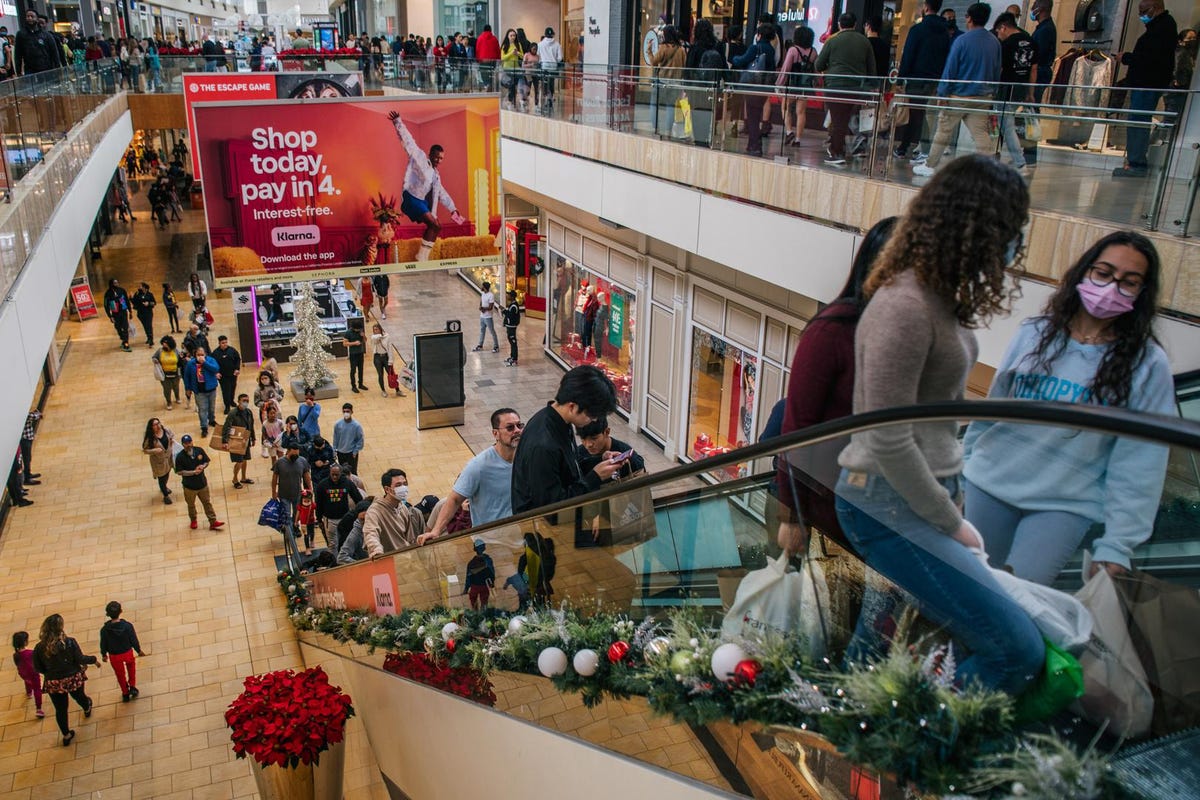
HOUSTON, TEXAS – NOVEMBER 26: People shop in The Galleria mall during Black Friday on November 26, … [+]
Malls came into existence in the early 20th-century, but the concept took off after WWII when suburban life took hold, and the demand for a local shopping destination increased. Department stores started to anchor shopping centers, and they began popping up all over the country. Then came the internet, people started shopping online and, more importantly, transacting online, and the need for large shopping centers became less appealing. Now, tail-end of the pandemic, physical retail is on the rise again. There has been an overall increase in demand for retail real estate, but what’s happening to malls?
Class A and B malls are taking the lead
The general viewpoint now is that malls are on the decline. In many ways, this is true, but it would be better to describe it as a reformation. In JLL’s Retail Recovery Report released earlier this month, freestanding retail has a vacancy rate of 2.9%. In comparison, mall vacancy continues to rise and currently sits at 7.2%, up 155 basis points from Q1 2018. Amongst malls, it’s essential to compare the difference in Class performance. Class A malls sit at 4.8%, Class B at 7.1% and Class C at 12.4%. The disparity between them has widened significantly over the years, with the most significant shift hitting during the pandemic. Class A and C are currently separated by 790 basis points, up from 490 in late 2019. This disparity will likely continue to grow over the years, and Class C malls will be forced out of the market or refurbished and upgraded to a higher class. That said, it’s easier to upgrade a Class B to Class A. Class C builds are usually more challenging the older the building and poorer the location. It is possible more companies like Amazon will buy up these properties and convert them into warehouses, which is already happening.
The tenant mix is evolving, and malls are investing in brands
With anchor department store tenants closing doors around the country, malls have significant gaps in occupancy. It is incredibly daunting, given that many leases have an occupancy clause included as a safety net for other tenants. The solution that landlords are adopting is a complete shake-up of the type of tenants shoppers typically see in a mall. These large spaces are now pet stores, gyms, health clinics, restaurants, and co-working spaces—anything that humans still need and desire to attend in person to fill ample square footage and bring traffic to the center.
Earlier this year, WeWork announced a partnership with Saks, where they opened co-working spaces in former Saks stores. Malls are also investing in retailers to secure their occupancy and control their tenants. For instance, Brookfield and Simon Properties joined forces with Authentic Brands to invest in various retailers.
Shoppers still see a purpose for malls, potentially with more technology
Placewise, a retail real estate property technology company, conducted a consumer survey of 594 adult respondents on their feelings towards malls and shopping centers. The results showed that 65% had visited an enclosed mall since the pandemic started, with 75% having visited an outdoor shopping center. The survey also showed that 57% are “very likely” or “likely” to shop in malls in five years, illustrating the demand for malls, at least in the short term. However, since shoppers are evolving, malls will have to continue adapting to keep younger shoppers interested.
MORE FOR YOU
One unique piece of data from Placewise is that 60% of shoppers would be “extremely interested” or “interested” if their local mall was able to offer all products at the mall for purchase online, where they could shop with multiple retailers at the mall, make one payment for all purchases, and have the items delivered to them, or be able to pick them up at a central location within the mall. It is a vision that Placewise has and could be a feature in all malls in the future. Stores are becoming more omnichannel and malls are in a position to do the same.







